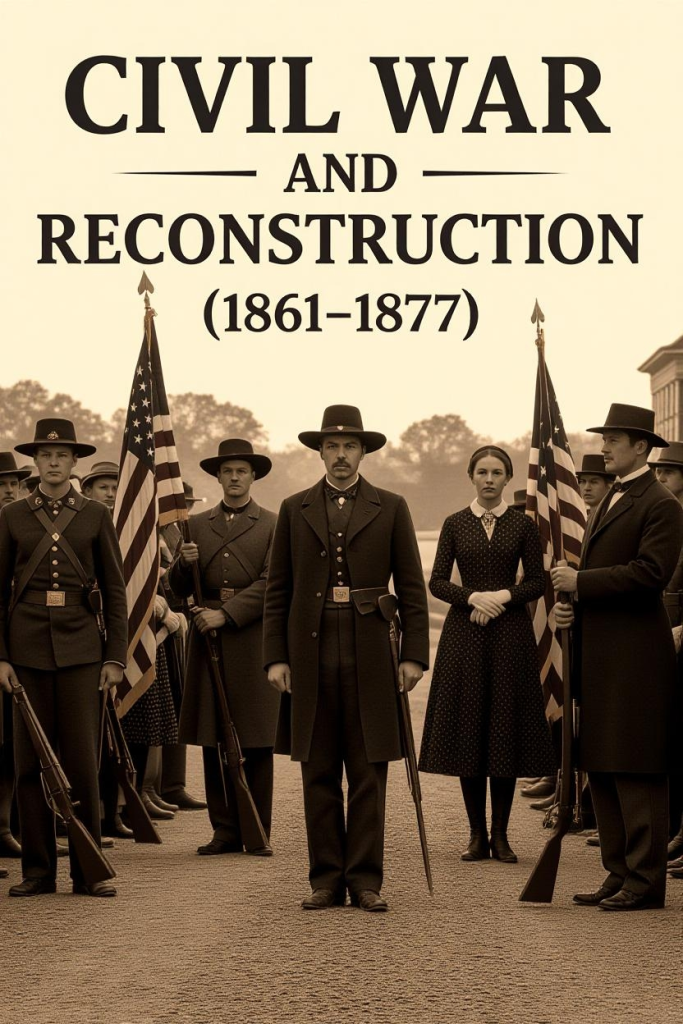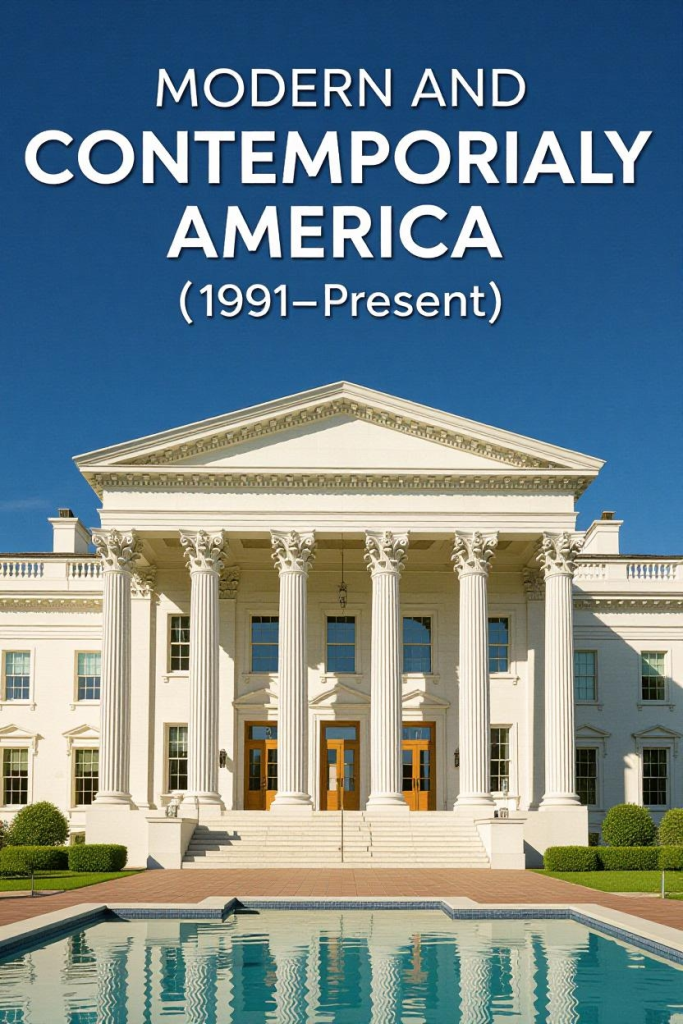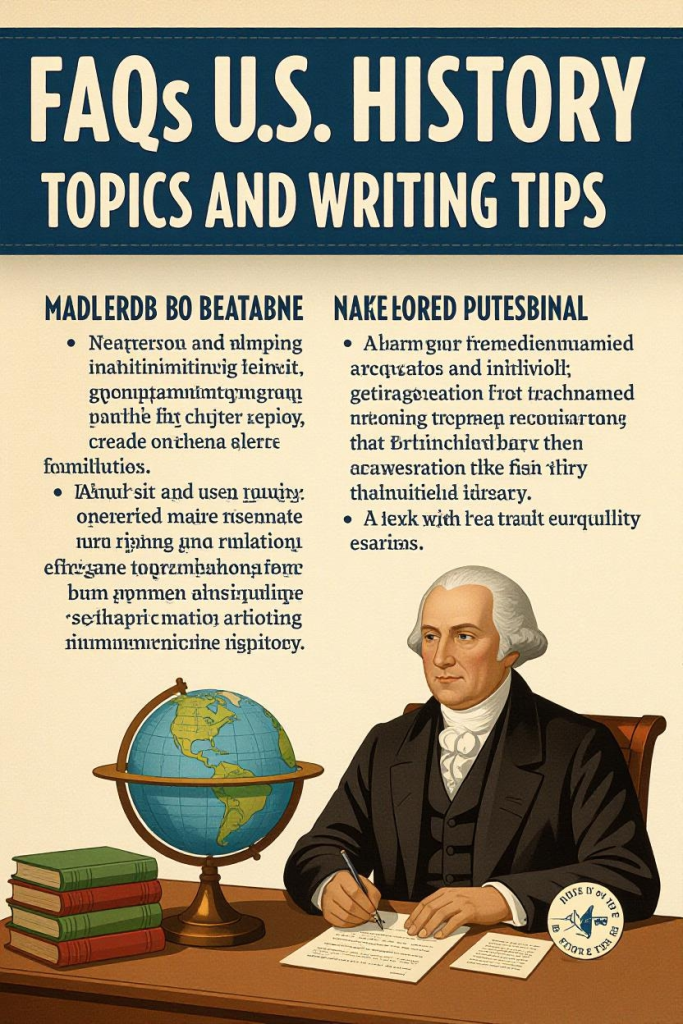
Introduction
The history of the United States is a vibrant tapestry of revolution, innovation, and social transformation. From the early struggles of colonial settlers to the global leadership of modern America, each era tells a story of resilience and change. Understanding U.S. history means exploring how conflicts, ideas, and reforms shaped the nation we know today.
In this blog, we’ve organized a comprehensive list of engaging U.S. history topics from the Colonial Era to the present day—perfect for essays, research papers, or general exploration. In case you want more guidance on how to write US History Topics visit Essayassits.com and get quality AI and Plag free Essays.
U.S. History Topics: From the Colonial Era to Modern Times
America’s Colonial Beginnings (1607–1776)
- Life and Struggles in Jamestown Settlement
- Religious Motivations of the Puritans in New England
- The Salem Witch Trials of 1692
- Economic Impact of Mercantilism and the Triangular Trade
- The Origins and Effects of Slavery in Colonial America
- Relations with Native American Tribes and Conflicts
- The Great Awakening and its Role in Shaping Colonial Identity
- Role of Women in Colonial Society and Family Life
- Education and Literacy in Early America
- Colonial Resistance to British Taxation and Laws
Revolutionary America (1775–1783)
- Causes of the American Revolution: Taxation Without Representation
- Influence of the Enlightenment on Colonial Thought
- The Declaration of Independence: Significance and Legacy
- Women’s Contributions in the Revolution
- African Americans and the Fight for Freedom
- Native American Alliances During the War
- Major Battles: Lexington, Concord, and Saratoga
- Impact of Foreign Alliances: France, Spain, and the Netherlands
- The Treaty of Paris (1783) and American Independence
- Revolutionary Ideas and the Birth of American Political Thought
The Birth of a Nation (1783–1815)
- Articles of Confederation: Strengths and Weaknesses
- Constitutional Convention: Compromises and Debates
- Adoption of the Bill of Rights (1791)
- George Washington’s Presidency and Leadership Style
- Hamilton vs. Jefferson: Economic Policies and Party Politics
- The Louisiana Purchase and Western Expansion
- The Lewis and Clark Expedition: Exploration and Science
- The War of 1812: Causes, Battles, and Consequences
- Native American Resistance During Early Expansion
- Landmark Supreme Court Decisions in the Early Republic
Jacksonian Democracy and Antebellum America (1815–1861)
- Expansion of Voting Rights and Popular Democracy
- Andrew Jackson’s Presidency: Policies and Controversies
- Indian Removal Act and the Trail of Tears
- Rise of Abolitionism and Anti-Slavery Movements
- The Second Great Awakening and Religious Reform
- Women’s Rights Movement: Seneca Falls Convention
- Westward Expansion and Manifest Destiny
- Economic Differences Between North and South
- Key Legal Cases: Dred Scott, Missouri Compromise
- Growth of Railroads and Industrialization
Civil War and Reconstruction (1861–1877)

- Causes of the Civil War: Slavery, States’ Rights, and Economics
- Major Battles: Gettysburg, Antietam, and Vicksburg
- Emancipation Proclamation and African American Soldiers
- Women’s Roles During the War
- Technology and Medicine in Civil War Battles
- Lincoln’s Leadership and Assassination
- Reconstruction Plans: Lincoln vs. Radical Republicans
- Rise of Black Codes and Segregation
- 13th, 14th, and 15th Amendments: Political Impacts
- Freedmen’s Bureau and African American Education
Gilded Age and Progressive Era (1877–1917)
- Industrial Titans: Rockefeller, Carnegie, Morgan
- Labor Movements and Strikes: Homestead, Pullman
- Immigration Waves and Urban Life
- Political Machines: Tammany Hall
- Social Reform Movements: Temperance and Settlement Houses
- Women’s Suffrage and Activism
- Muckrakers and Investigative Journalism
- Progressive Reforms in Economy and Government
- Conservation and National Parks Creation
- Trust-Busting and Antitrust Legislation
World Wars and Interwar Period (1914–1945)
- U.S. Involvement in World War I and Its Causes
- Women and Minorities in WWI Labor Force
- The Treaty of Versailles and Wilson’s Fourteen Points
- Prohibition and Organized Crime in the 1920s
- The Harlem Renaissance and Cultural Flourishing
- Causes and Impact of the Great Depression
- FDR’s New Deal Programs and Social Reform
- Japanese American Internment During WWII
- Major WWII Battles: D-Day, Midway, Iwo Jima
- The Manhattan Project and Atomic Bombing
Postwar America and Cold War (1945–1991)
- The GI Bill and Suburban Expansion
- Early Cold War Policies: Truman Doctrine and Marshall Plan
- Korean and Vietnam Wars
- Civil Rights Movement: Brown v. Board, Civil Rights Act
- McCarthyism and the Red Scare
- Space Race: Sputnik, Apollo 11, NASA’s Role
- Women’s Liberation Movement
- Anti-War Protests and Counterculture of the 1960s
- Reagan’s Presidency and Conservative Resurgence
- End of the Cold War and the Fall of the Berlin Wall
Modern and Contemporary America (1991–Present)

- September 11, 2001, and U.S. Response
- Wars in Afghanistan and Iraq
- The 2008 Financial Crisis and Economic Recovery
- Barack Obama’s Presidency and Healthcare Reform
- Social Media’s Role in Politics and Society
- Black Lives Matter and Modern Civil Rights Issues
- COVID-19 Pandemic: Health and Economic Impacts
- Immigration Policies and Border Security
- Climate Change Policies and Environmental Activism
- Technological Innovation: AI, Digital Economy, and Remote Work
5 Smart Tips for Choosing a U.S. History Topic
| 📌 Tip | 📖 Explanation |
| 1. Pick What Interests You | Choose an era or theme that excites you—writing is easier when you care about the topic. |
| 2. Be Specific | Avoid overly broad subjects; narrow down to one event or person for deeper analysis. |
| 3. Use Primary Sources | Rely on authentic documents, letters, and newspapers for evidence. |
| 4. Connect Past to Present | Show how historical events still influence today’s world. |
| 5. Check Resources | Make sure there’s enough credible material to support your essay. |
How to Research and Cite Sources for Your U.S. History Essay

Writing a strong U.S. history essay requires more than just summarizing events—you need credible research and proper citations to support your arguments. Here’s a step-by-step guide:
Step 1: Finding Credible Sources
- Start with Academic Databases:
Use JSTOR, Google Scholar, ProQuest, or your school’s library database for peer-reviewed journals and books. - Include Primary Sources:
- Letters, diaries, and speeches of historical figures
- Government documents, treaties, or legal cases
- Newspapers and periodicals from the time period
- Check Secondary Sources:
- Scholarly books and articles interpreting historical events
- Biographies of key figures
- Historical analyses from reputable historians
- Evaluate Online Sources:
- Prefer .edu, .gov, or well-known historical organizations (e.g., Library of Congress, National Archives).
- Avoid unreliable websites and Wikipedia as your main source.
Step 2: Organizing Your Notes
- Take Clear Notes: Separate direct quotes, paraphrased ideas, and your own analysis.
- Record Source Details: Author, title, publication date, page numbers, and URL if online.
- Use Digital Tools: Programs like Zotero, Mendeley, or Evernote help organize sources efficiently.
Step 3: Writing Your Essay
- Integrate Evidence:
Use your sources to support your arguments, not just summarize facts.- Example: Instead of “The Civil War happened in 1861,” explain causes and support them with a historian’s analysis.
- Use Quotes Sparingly:
Direct quotes should enhance your argument, not replace it. Paraphrase most information in your own words.
Step 4: Citing Your Sources
Proper citation is essential to avoid plagiarism and give credit to authors. The most common styles for U.S. history essays are MLA and Chicago.
MLA Style (Modern Language Association)
- In-text citation: Include author’s last name and page number.
Example: (Adams 45) - Works Cited page: List all sources alphabetically.
Example:
Adams, James Truslow. The Epic of America. Little, Brown and Company, 1931.
Chicago Style (Notes and Bibliography)
- Use footnotes or endnotes for in-text references.
- Bibliography lists all sources at the end.
Example (book):
Adams, James Truslow. The Epic of America. Boston: Little, Brown and Company, 1931.
Step 5: Double-Check Accuracy
- Make sure all citations match your notes and sources.
- Ensure quotes are exact and paraphrased content is properly credited.
- Confirm the style guide (MLA, Chicago, APA) your teacher or institution requires.
Pro Tip
Start researching early—collecting credible sources takes time. Organizing your notes as you go will make writing smoother and prevent last-minute stress
FAQs: U.S. History Essay Topics and Writing Tips

1. What are some easy U.S. history essay topics?
Some simple yet engaging topics include the Salem Witch Trials, the American Revolution, the Great Depression, or Martin Luther King Jr.’s role in the Civil Rights Movement.
2. How do I choose the best topic for a U.S. history paper?
Pick a topic that interests you, has enough research materials, and fits your assignment’s scope. Focus on one event, movement, or historical figure.
3. What makes a good U.S. history essay?
A strong essay includes a clear thesis, credible sources, critical analysis (not just summary), and a logical structure connecting causes and effects.
4. Where can I find reliable sources for my research?
Use databases like JSTOR, Google Scholar, or the Library of Congress. Avoid unreliable websites or sources without citations.
5. Can someone help me write my U.S. history paper?
Yes! Essayassists.com offers expert writing and editing help for history essays. You’ll get plagiarism-free, properly cited papers tailored to your topic and academic level.
Final Thoughts
American history is more than a timeline—it’s a story of progress, conflict, and hope. Whether you’re writing about colonial America or contemporary politics, every topic offers valuable insights into the nation’s identity.
If you need professional help with writing, formatting, or editing your history paper, Essayassists.com is here to support you with expert guidance, free revisions, and guaranteed originality.
Would you like me to add a “Call to Action” banner at the end (e.g., “Order your custom U.S. history essay today at Essayassists.com!”) to make it more engaging for your readers and SEO conversion-focused?
